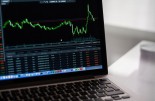Swissquote: Lack of appetite on higher tax & interest rates
Swissquote: Lack of appetite on higher tax & interest rates

By Ipek Ozkardeskaya, Senior Analyst, Swissquote
There is a clear lack of risk appetite across the global equities following the possibility of a minimum corporate tax of 15% discussed during the G7 meeting over the weekend, and ahead of Thursday’s inflation data, that could reveal a further acceleration in US consumer prices, to levels that could soon start threatening the Federal Reserve’s (Fed) inflation target of an average of 2%.
The US will reveal the latest inflation data and the headline inflation is seen accelerating to 4.7% in May from 4.2% printed a month earlier and we see quite a rapid acceleration in fact as the same figure stood no higher than 1.4% at the beginning of the year, and at 0.1% a year ago. The Federal Reserve (Fed) officials defend that the overshoot in inflation won’t last long enough to threaten their inflation target, and the subdued activity in US yields confirm that market is mostly willing to believe the Fed in this theory of nothing but a transitory rise in inflation. But with Biden’s huge spending plans, positive pressure on commodity prices, slow global logistics and worldwide shortages due to the pandemic, there is a chance that we see a more-persistent-than-what-the-Fed-expects inflation in the short run, and the market reaction to that could be an important reshuffle in portfolio allocation that would harm the tech stocks, at least in the short run.
Therefore, prospects of higher taxes and higher rates should dent appetite in US tech giants into Thursday’s inflation figure, although we haven’t seen a devastating selling pressure on Monday. Apple closed near flat, Facebook rallied almost 2% and hit a fresh historical high, while Alphabet closed a touch below its all-time high.
Gold is testing the $1900 per oz offers again. The expectation of faster inflatin is sure a boon for gold bulls, yet prospects of a quick rise in US yields should prevent gold from benefiting from the full upside potential of the rising inflation expectations and the idea that the overshoot in inflation may not be as short-lived as the actual consensus view. The yellow metal could well fell off the race and return to the $1850/1840 area, inclusing the 200-day moving average at the next sell-off wave. Yet, $1800 mark will certainly throw a floor under any further sell-off, as gold is still the best known hedge for rising inflation mostly due to the historical reasons.
US crude, on the other hand, sees some resistance near the $70 per barrel and the downside correction could extend to $67, May resistance that could turn into support. In the medium run, there is certainly more upside potential to be seized above the $70 per barrel, but the bullish setup could remain capped near the $75/78 region, given that a further rise in oil prices would have a damaging effect on the economic recovery in two ways. First, more expensive oil would weigh on a company-level recovery by increasing operating costs, and second, it would inevitably boost inflation expectations and apply an additional pressure on central banks to tighten their monetary policies.
But happily, policy tightening is not on cards just yet, at least for the Fed which is ready to fight until the very end to keep the financial conditions as accomodative as possible.
Finally, Bitcoin slipped to the $32K. The major price support stands at the $30K level, and a slide below this handle could run into stops and accelerate the sell-off in the short run. Microstrategy could be one collateral damage of lower Bitcoin prices, as the company’s got under pressure and saw multiple critics following its decision to issue junk bonds to buy Bitcoin. We could see the sell-off in Microstrategy extend toward $447 per share, the 200-day moving average, with Bitcoin sell-off applying additional downside pressure on the stock price.









